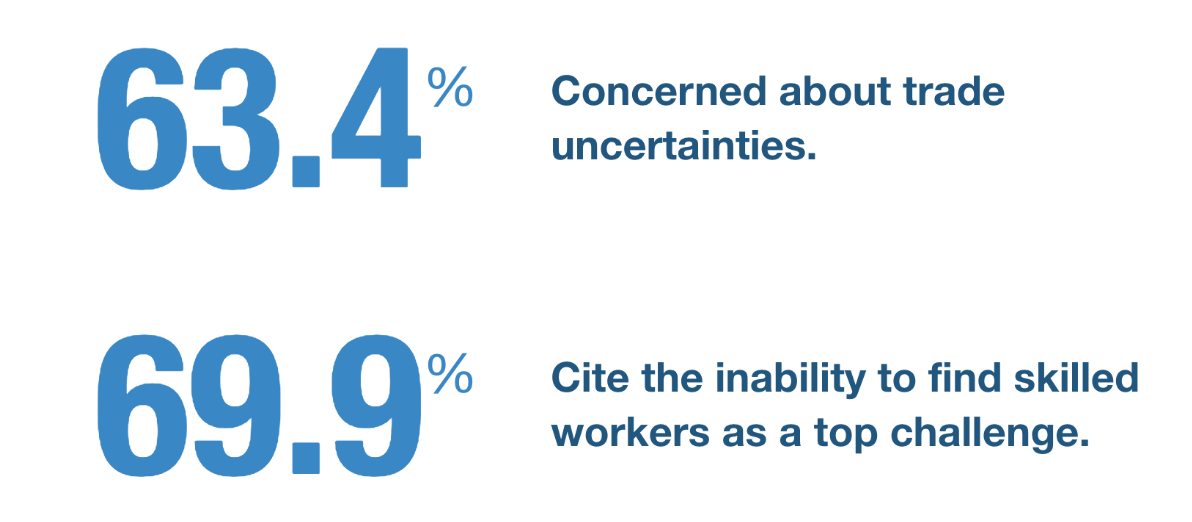There have been numerous methodologies developed to improve production processes. While some of these methods focus on worker capability, others have been developed to improve the hardware associated with production processes. With the increasing use of factory management and optimization technologies such as IIoT and Smart Factory Analytics, it’s been possible to dramatically improve the results of implementing these production improvement processes.
In this article, we’ll delve into how the Total Production Maintenance (TPM) method is enhanced with the Industrial Internet of Things (IIoT) and Smart Factory Analytics technology.
What is Total Production Maintenance (TPM)?
Total Production Maintenance (TPM) is a manufacturing system which focuses on maintaining productivity and longevity of equipment through eliminating the Six Losses. The Six Losses are the major contributors to productivity loss from an equipment perspective. These are defined as unplanned stops, planned stops, small stops, slow stops, slow cycles, production rejects, and startup rejects.
Below are More In-depth Explanations of Each Loss Defined by TPM:
Unplanned Stops
Unplanned stops are extended periods which equipment is scheduled to run yet inoperable due to unforeseen events. Examples of unplanned stops include malfunctions, lack of materials, and backups upstream or downstream of the equipment.
Planned Stops
Planned stops are extended periods which equipment is scheduled to run but is not due to an expected event. Examples of planned stops include shift changeovers, routine maintenance, and tooling adjustments.
Small Stops
Small stops are categorized as any short period (1-2 minutes) which equipment production is halted to resolve an issue. Small stops can usually be resolved by the operator with minimal effects on the production process. Examples of small stops include misfeeds, incorrect operating settings, and sensor faults.
Slow Cycles
Slow cycles occur when equipment performs slower than the Ideal Cycle Time. Reasons for slow cycles include operator inexperience, startup, and shut down.
Production Rejects
Project rejects are defective products produced during standard operations. This includes products in which more time and resources could be invested into to make them properly functioning. Potential causes of production rejects include operator error, incorrect equipment settings, and insufficient quality.
Startup Rejects
Startup rejects are defective products produced during startup operations prior to standard operations. Startup rejects typically occur during changeovers but may occur during any equipment startup. Causes for startup reject include changeovers and equipment with warm-up cycles.
How IIoT and Smart Factory Analytics Improves TPM
The Industrial Internet of Things (IIoT) is the connectivity of various types of equipment and control system through the use of the internet. Smart Factory Analytics are enabled by IIoT connectivity to production machinery. Smart Factory Analytics then gives a direct conduit from production machinery operating behavior to analytics dashboards that are available to decision-makers in a customizable format. That means that production improvement practitioners, machinery operators and supervisors, and senior leadership can have just the right information provided to them, in real time, to improve how they can perform their roles.
IIoT and Smart Factory Analytics exponentially increases the effectiveness of TPM implementations. Importantly, having real time analytics available to respond to production upsets in the form of downtime can produce business value and fast ROI. Over time however, using IIoT technology to gather accurate data directly from process machinery removes human errors or bias in the data by replacing manual data collection. It also brings the data into one location (your Smart Factory Analytics software) and out of paper records or spreadsheets so that data can be analyzed over time. The analysis process is efficient because you don’t have to continuously manipulate spreadsheets to get insights, instead you glance at a customized dashboard that gives you an immediate read on the situation as it evolves over time.
This is how you can move from simply responding to real time data such as a singular upset condition, toward gathering insights as data accumulates over time. The value of your data increases as you begin to see and respond to longer term trends as opposed to one-off upsets. Your business moves over time from fast ROI available to you by compressing downtime response times to immense ROI as you optimize entire process flows.
With IIoT technology connected to manufacturing machinery and Smart Factory Analytics dashboards, you can now discern patterns of machinery behavior that are not visible any other way. In our article, Strategic Roadmap for IIoT Success we note that the most often missed critical success factor in Smart Factory Analytics implementations is tying your initiative to an accepted production improvement process. Since TPM is directly related to optimizing the performance of the machinery that you’re connecting to, it’s a natural first process to think of tying your Smart Factory Analytics initiative to.
A Smart Factory Analytics implementation will enable you to affect all six of the TPM losses.
Interested in implementing a Smart Factory Analytics solution that will accelerate your TPM initiative?

















